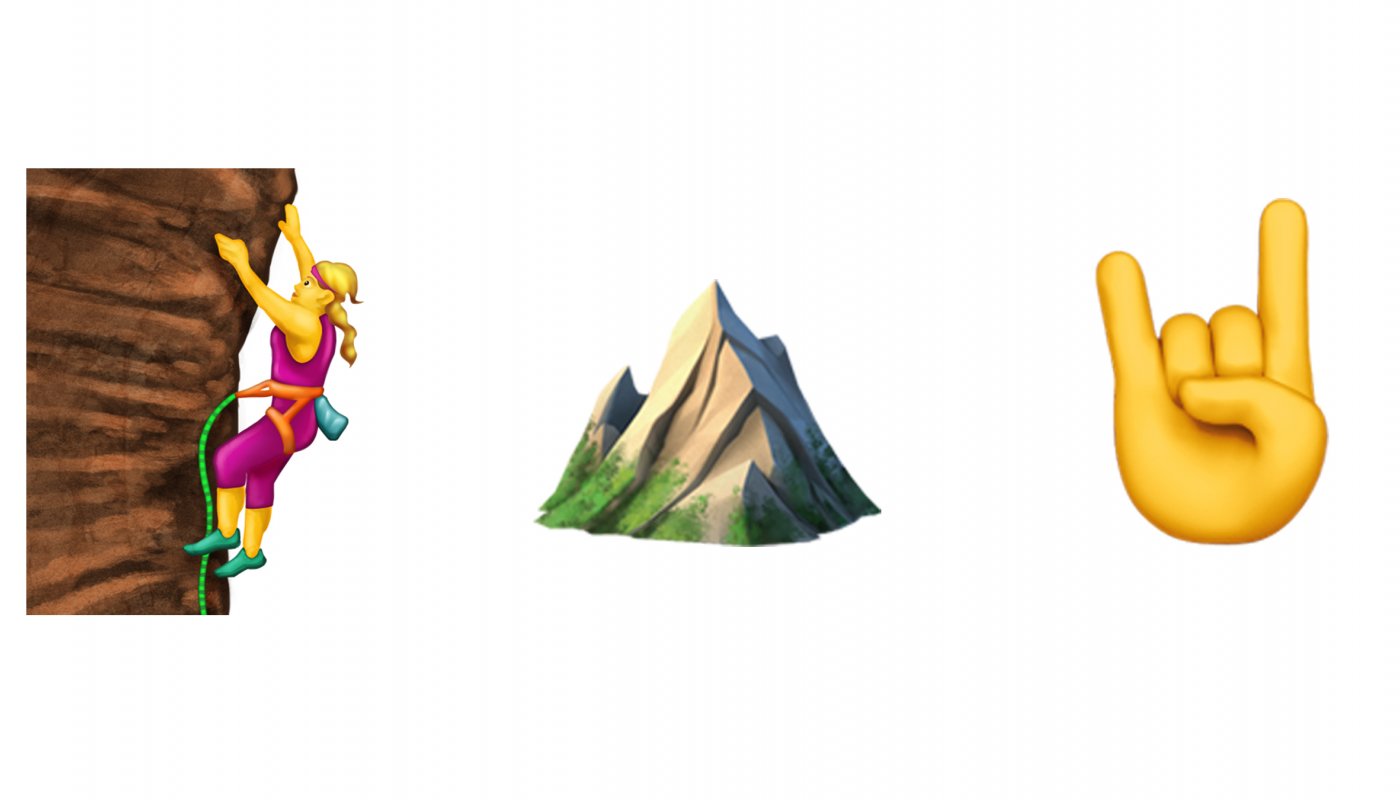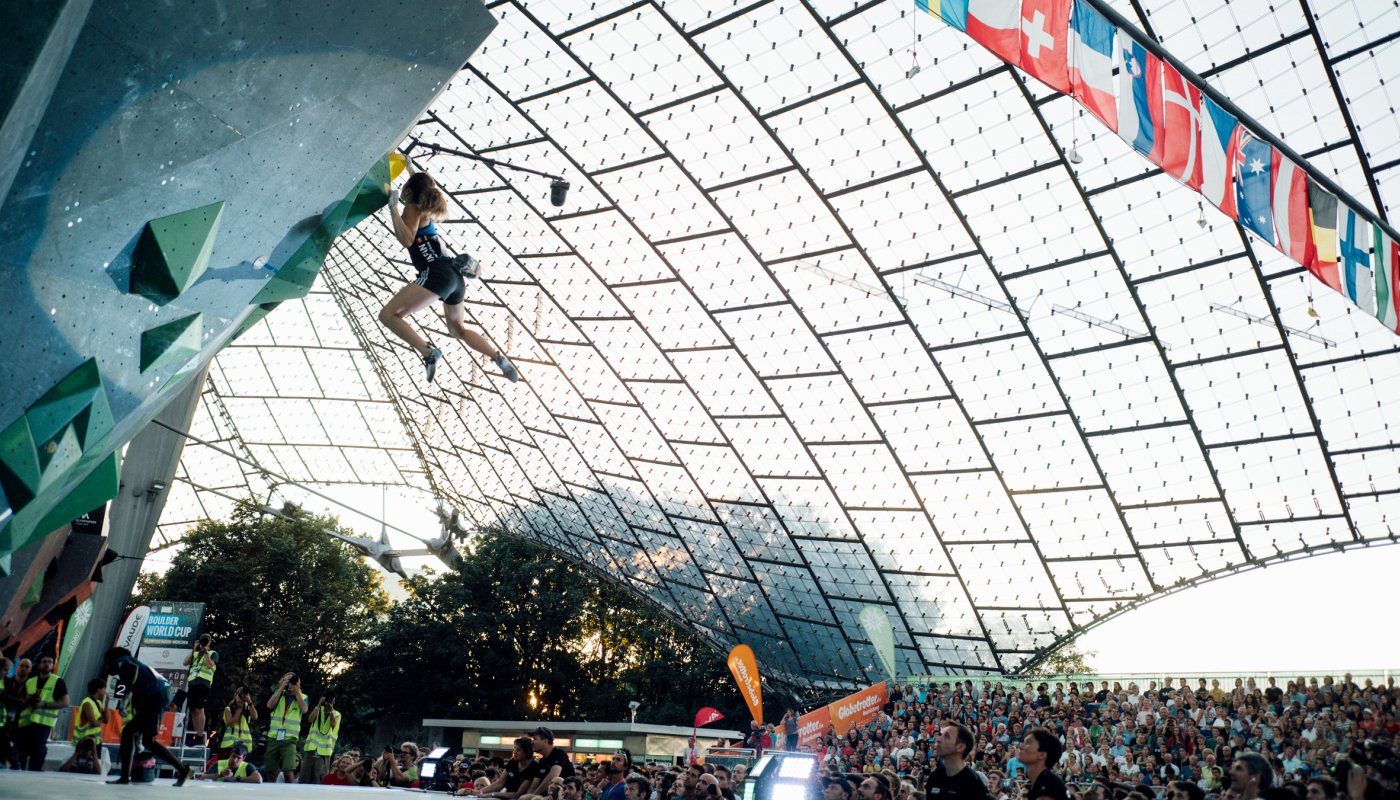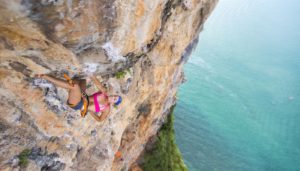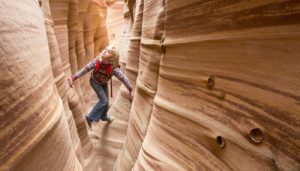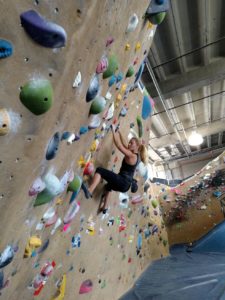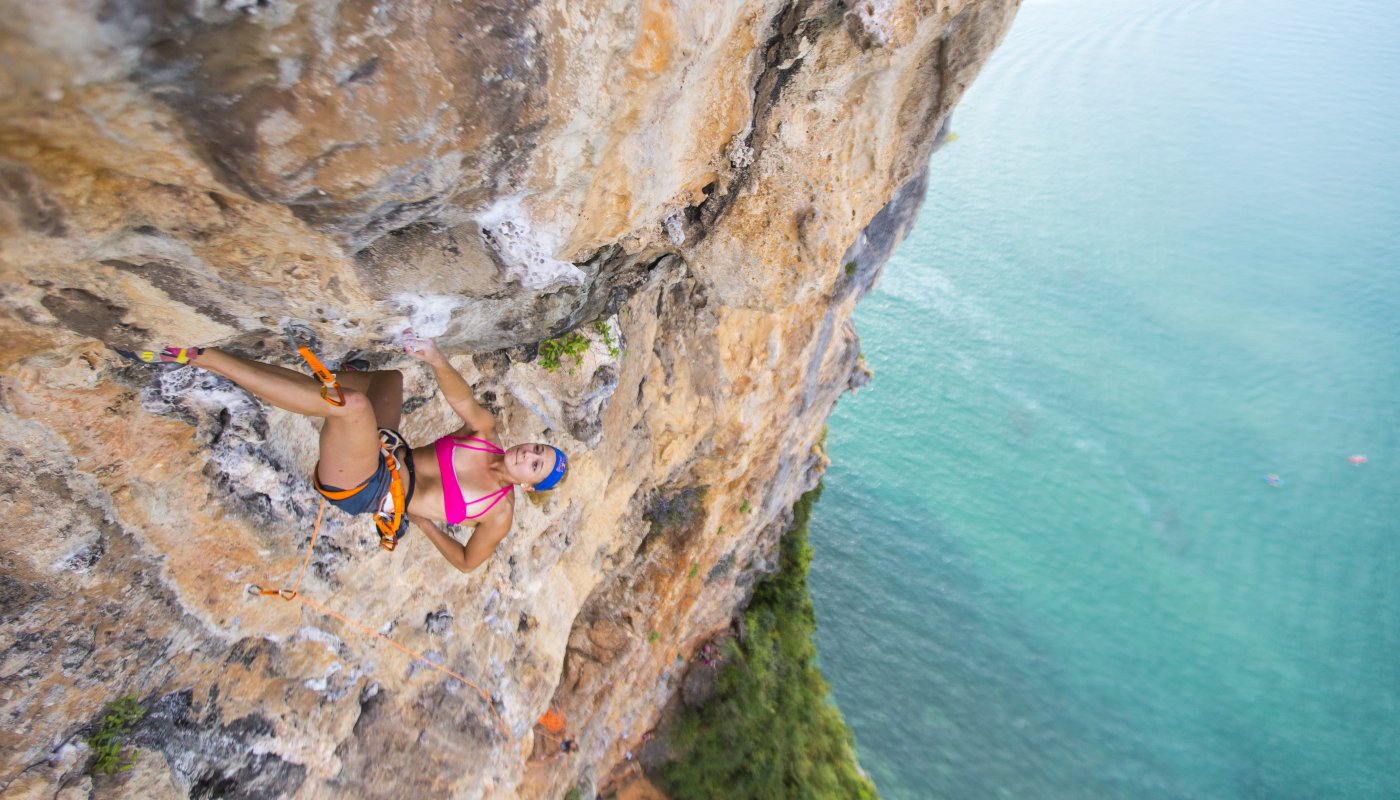
As a woman in climbing, I occupy two worlds: one defined by strength and grit, the other by beauty and traditional ideas of femininity. It’s something I still struggle with.
Last fall, hours before a red-carpet gala for the Women’s Sports Foundation in New York, I was getting ready in a hotel room with other pro female athletes. Noticeably, there was a plethora of different body types, from Olympic gymnasts and figure skaters to tennis players and skiers to snowboarders and race-car drivers to rowers and me—the rock climber. Each of us takes pride in the physical strength our respective fields require, and we also find joy in having our makeup done and wearing glamorous gowns for a night.
Red carpet events are a completely different side of my job than waking up on the side of a cliff, not having looked in the mirror in a couple days and proceeding to pull my hair back and climb. I live in both worlds: one that puts me in an environment highlighting beauty and femininity; the other valuing strength and grit.
Continue reading
It’s about time we had emojicons for climbers! For the past year, I’ve been working on creating one.
have wanted a climber emoji for a few years now. Admittedly, I love using emojis in my text messages and captions on social media. You can tell a lot about a person by their most frequently used emojis: how they interact with people, their sense of humor, how their mind works. For instance, these are my top emojis:

While there seems to be an emoji for all kinds of sports and outdoor activities, like surfing and weight lifting, there shockingly hadn’t been one for one of the fastest-growing adventure sports—until today! I first tweeted about the lack of a climbing emoji last May, tagging @GetEmoji, to highlight the absence. To my surprise, the account actually tweeted me back and said that I could submit an emoji design. I direct-messaged back, excited.
Tags: emoji
Continue reading
Athletes who love climbing outdoors aren’t positioning themselves to perform well at the 2020 Tokyo Olympics. Here’s why.
The picture of how competitive climbing will work in the 2020 Tokyo Olympics is beginning to come into focus. The International Olympic Committee announced last fall that the sport would be included in the next Games—in speed climbing, sport, and bouldering—and this weekend an official assembly in Canada confirmed a combined format. It feels like a missed opportunity to bring climbing to the biggest stage in the world.
Tags: olympics
Continue reading
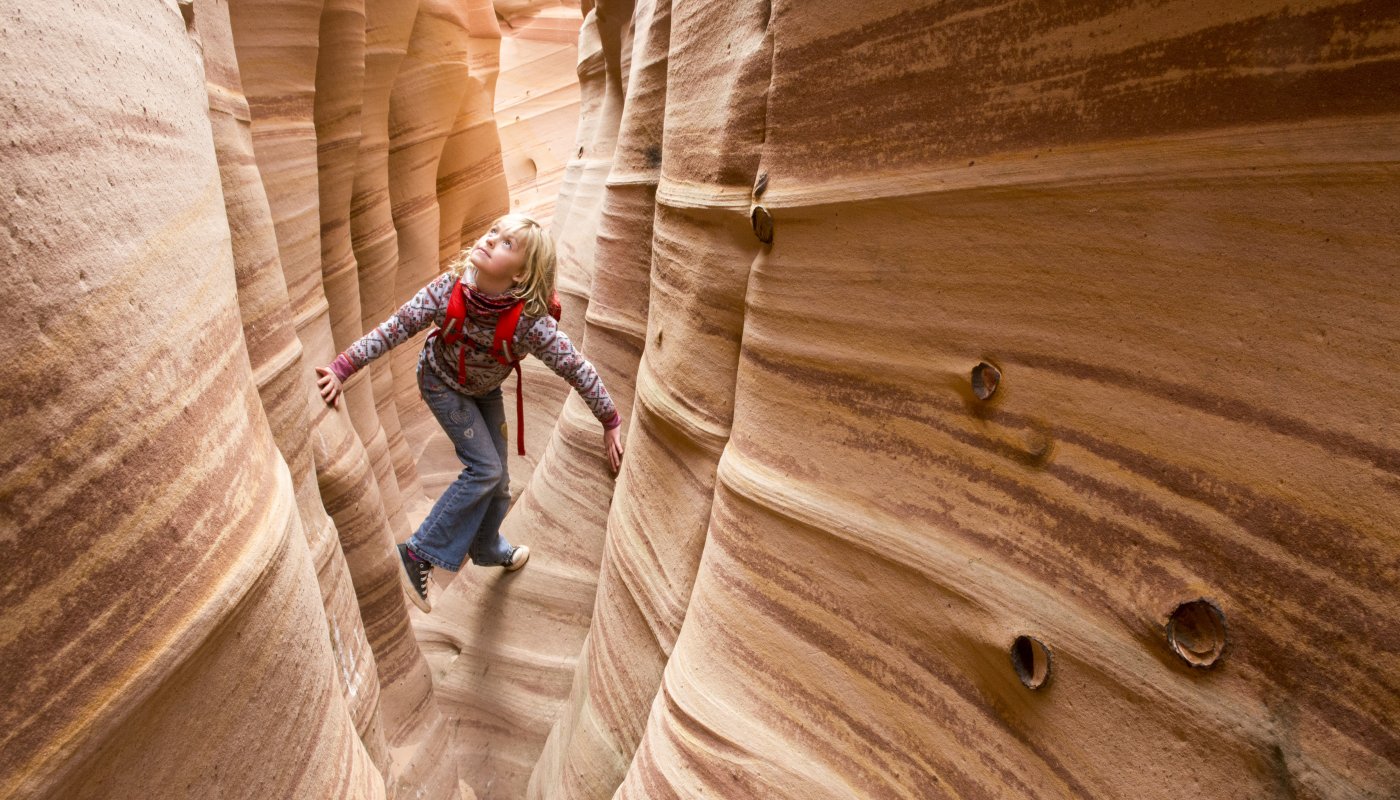
“How can you let her do that? It’s so dangerous!” For years, my mom has fielded this question from other parents about my climbing. Here’s what she thinks about raising an adventurous daughter in an unfamiliar sport.
“Every time I hear about what Sasha does, I think, ‘I’m so glad that’s not my daughter!’” I overheard a woman say this to my mom at a holiday party last December. The woman was referring to the fact that I’m a professional climber. My mom, Andrea, later told me that she often gets this type of response from other mothers when she mentions what I do for a living.
I guess that perspective makes sense. On the surface, climbing seems pretty dangerous. The reality, of course, is that there are ways to calculate and reduce risk if you know what you’re doing. The odds of a fatal climbing accident are relatively low. But a lot of people don’t know that. My mom certainly didn’t know that back in 1998, when she hosted my brother’s birthday party at a local climbing gym in our hometown of Alexandria, Virginia. That was my first climbing experience—the event that set me on a trajectory to make the sport my life.
Continue reading

